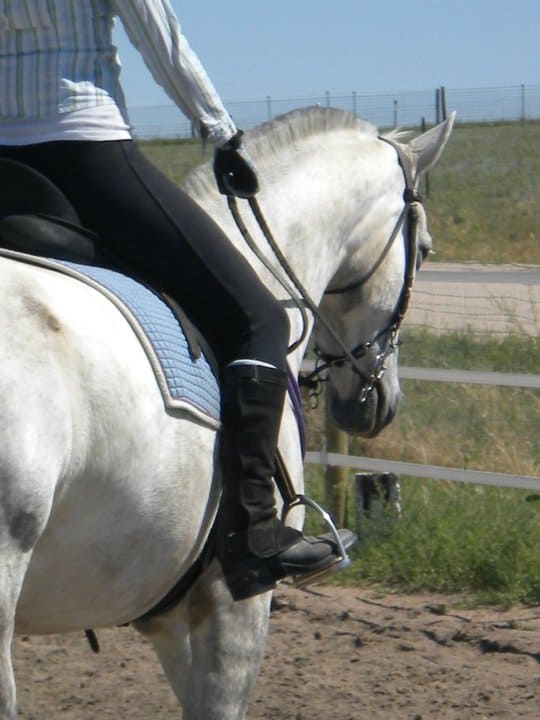 It’s that time again- the sun’s a bit late in the morning. Geese are starting migration and horses are growing hair. School buses are out in full force.
It’s that time again- the sun’s a bit late in the morning. Geese are starting migration and horses are growing hair. School buses are out in full force.
It’s been 40 years since I got summers off to play and ride, and then lost sleep over what to wear first day of school. Some part of me is still on that old school schedule, minus the clothing drama.
In dressage we use the term schooling to mean training a horse. And the British refer to a riding arena as the school. Just sounds smarter, doesn’t it?
Do you school your horse? Yes, whether you are conscious of it or not. On the ground or in the saddle, every interaction with a horse, for better or worse, is training.
It’s easy to get the winter doldrums, so fall is a good time to revisit your curriculum- (word origin from the Latin: meaning an action of running, a course of action, race, chariot. It sounds equine based to me.)
What subjects would you study at your school?
Youngsters can start with the Dick and Jane books, (“See Toby gallop. Run, Toby, run.) But those get boring pretty quick, so move on to Shakespeare, “He doth nothing but talk of his horse.” Or “A horse! A horse! My kingdom for a horse!”
Or learn a new language- maybe Spanish (Oliveira), or German (Klimke). History fans might prefer Xenophon. Cowboy translations (Western Dressage) are getting popular, too.
Enough literature and philosophy classes? How about math? Geometry is the dressage rider’s choice, making 20 meter circles that are actually round takes some schooling. Add a music class? Schooling a horse is all about rhythm, so crank it up!
Snow days are good for biology or anatomy. Studying the equine digestive system might take all winter, but it is information that could save your horse’s life. Or maybe just curl up, watch videos, and dream.
Finally, it’s art class. That’s the place where these subjects combine with individual creativity for that one-of-a-kind partnership.
I know I am beating this school analogy (Have a class schedule for your horse-) half to death (and plan some field trips.) There is an easier way, a curriculum that is a direct path to a supple, responsive ride. The USDF dressage tests are an outline to higher education, even if you don’t wear tall boots, even if you never compete.
Download dressage tests from the USDF (here.) Or if you are schooled in technology, there is an app for that (here) -it’s great for phones or tablets, in the arena/school with you.
First read the tests, especially the directive ideas, printed just to the right of the movements. Get an understanding of the goal of the movement executed well, with forward, relaxed gaits. Now, mount up.
“The horse you get off is not the same as the horse you got on. It is the job of the rider to ensure that, as often as possible, the change is for the better.” -Unknown
Whether you home school or work with an instructor, practice your lessons consistently and then grade your results. We usually get pretty much what we ask for. If your horse gets distracted, resistant, or confused- then slow down and learn to explain things better. A light responsive answer from your horse gets an A+ and a hall pass for both of you.
A horse’s life goes quickly, with no promises of tomorrow. Is there a riding discipline that you are curious about? Let your horse get inspired all over again, buy a fresh saddle pad if having a new outfit helps…
But set a goal, and make some progress. Maybe you are just learning the basics with a young horse, or maybe it’s the winter of the flying change. Whatever level, we all start the same way: Pick a spot and ride towards it.
Anna Blake, Infinity Farm.
You need to be a member of Barnmice Equestrian Social Community to add comments!
Join Barnmice Equestrian Social Community